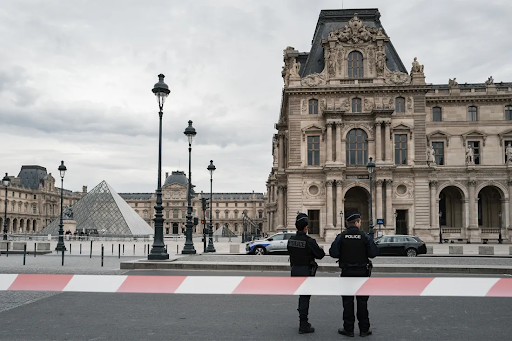Dakota Access Pipeline: What You Need to Know
The recent events occurring around Standing Rock and the Dakota Access Pipeline are not unheard of, but many of the facts are muddled or simply unknown. Here’s what you need to know before you end up in a debate about the happenings.
December 7, 2016
NDAPL. No Dakota Access Pipeline. A common phrase amongst people in the Iowa area, and now major news sources as word spreads of protests, attacks, and alleged attacks against human rights. Everyone has opinions on the crisis, but a lot of the time, the facts are not so readily available. Don’t get backed against the wall; here’s what’s going on.
The Dakota Access Pipeline (DAPL) is a run intended to send crude oil from the northwestern point of North Dakota (near the Bakken formations) to Patoka, Illinois. The line will cross through both of the Dakotas and part of Illinois. It will stretch over 1,172 miles, according to Dakota Access Pipeline Facts. Along this stretch of land lies the Standing Rock Reservation, home to the Sioux people.
According to The New York Times, hundreds of Native Americans feel that the pipeline will threaten their water supply, destroy important physical facets of their lands, influence the environment for the worse, and heavily influence the lives of the Standing Rock Sioux tribe, who will have the pipeline run directly through their reservations. They think the pipeline will damage a lot of what they hold dear, while people on the opposing side of the conflict think that the DAPL will encourage economic growth, as The New York Times says.
The people of Standing Rock decided to peacefully protest the building of the pipeline by standing directly in its way, halting the building of the DAPL and ensuring that their voices would be heard by the builders. For months they have remained there, unmoving, as summer turned to winter, and their influence spread across the country.
However, the process of building the DAPL started years ago. Since 2014, Snopes.com states that officials in the DAPL building team have been speaking with, and attending, meetings with hundreds of local communities and citizens to route the pipeline in a way that makes everybody happy. The DAPL has been rerouted to avoid several cities which cited worries over their water supplies. The article goes on to say that the Standing Rock Sioux were noncompliant, but had definitely been involved in at least some discussion. However, Standing Rock Sioux people say there was no communication between the DAPL officials and themselves. Other Native American communities say the same.
As the protests grew stronger, people across the country flooded to protesters’ camps, and news coverage expanded, it seemed to be that the deterring of the protesters used more and more force. The New York Times has multiple articles spanning October through November of rubber bullets used in close quarters, ice sprayed on protesters at below freezing temperatures, and North Dakota governor Jack Dalrymple ordering an expulsion of protesters off federal lands. Media outlets and social media both continue to ask the question of why such extreme measures are being taken when there’s no real necessity for risking the lives of protesters.
On Dec. 4, 2016, the DAPL was confirmed to be rerouted because it would go through a dammed section of the Missouri River. This will cost about $4 million to reroute, but Standing Rock Sioux people were celebrating a perceived victory. This win could be ripped out from under them in moments.
Donald Trump, president-elect, believes the pipeline should be finished. He could easily veto the decision and finish the pipeline along its original course, regardless of protesters. Shareholders are also reasonably upset, and some will sue. This could mean years of court battles and decisions. And what if another community thinks that the pipeline is getting too close to their location? It could be potentially devastating to build the crude oil pipeline. We will have to watch and see what happens.
At this point in time, Standing Rock Reservation will not see the pipeline run through their land. But time can only tell where the DAPL will fall.








